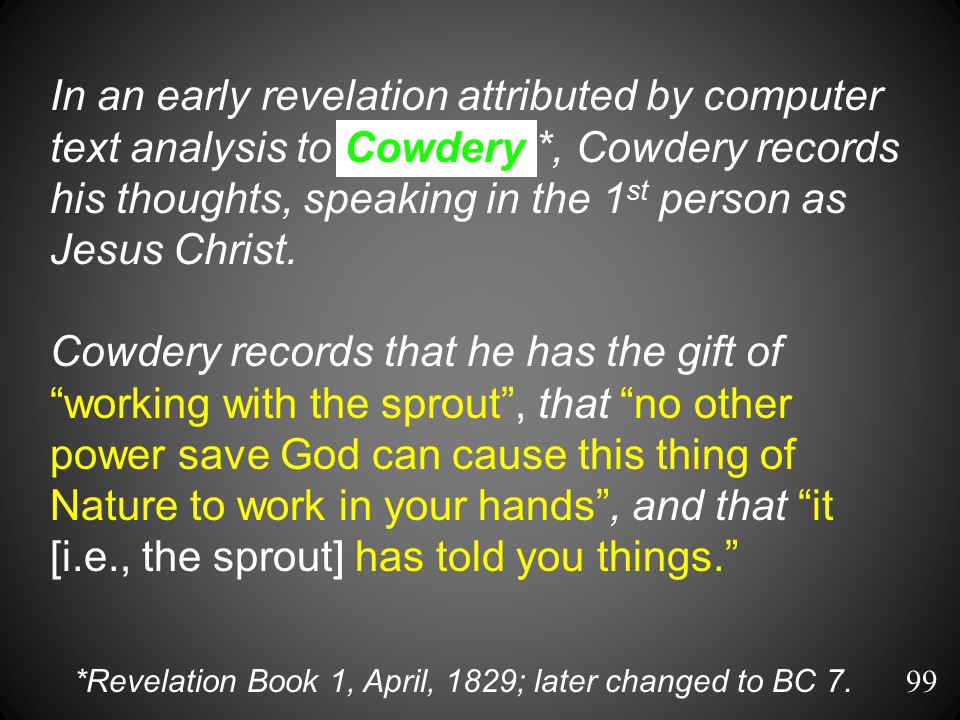Cowdery believed in “rhabdomancy”: divination by means of a rod, wand, staff, stick, or arrow.
Thomas Horne mentions rhabdomancy as a method of divination in An Introduction To the Critical Study and Knowledge of the Holy Scriptures, The reference is: Thomas Hartwell Horne, An Introduction To the Critical Study and Knowledge of the Holy Scriptures, 1st Am. ed., 4 vols. (Philadelphia: E. Littell, 1825), 3:358, 358n1; also “E. Littell… has in press, AN INTRODUCTION To the Critical Study and Knowledge of THE HOLY SCRIPTURES By Thomas Hartwell Horne, M.A.,” Wayne Sentinel (Palmyra, NY), 6 Apr. 1825, [3]; “Horne’s Introduction to the Study of the Bible, 4 vols.,” in “MORE NEW BOOKS,” Ontario Repository (Canandaigua, NY), 30 Aug. 1826, [3]; see ch. 6 for discussion of Home’s significance. Later editions of Home’s book corrected the misspelling of rhabdomancy. Dale Morgan reported that “Divining rods, which usually were forked twigs cut from witch hazel, willow, peach, or some other favored tree, have a similar antiquity, dating back to the times of the Medes and the Persians, but the employment of rhabdomancy specifically for locating mines and buried treasure seems to have developed about the fifteenth century in the Harz Mountains of Germany. The practice was brought to Cornwall by German miners in Elizabethan times, and became general in England and western Europe during the next century.”
http://www.sidneyrigdon.com/criddle/Smith-Source2.htm
